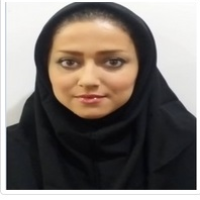Investigating the Climate Impact on the Architecture and Decorative Elements of Hoseineyeh-e-Navvab of Birjand
Author(s):
Abstract:
One of the fundamental factors in designing Islamic cities and urban monuments, is climate and observing the Ron principle so, that its effect can be seen in all of the urban fabric and even in all the buildings and the elements of interior places. In the Islamic republic of Iran architecture in the hot and dry climate is one of the most specific and obvious manifestations of the effect of climate in the formation of the cities and buildings and the most beautiful Iranian designs can be observed in this type of climate. Iranian city experts including western and eastern, consider physical monuments on the basis of Islamic culture as one of the characteristics of Islamic cities. Among other religious centers, Hosseineyeh has less been paid cosidered, while these elements have had important role forming the behavior, strengthening social ties and reinforcing cultural convergence. This paper has selected Birjand city which is on the edge of desert as a unique example which little traditional architectural studies have been done about it and studies the effect of climate in one of the unique historical monuments at Shah Abbas Safavid reign named Hoseineyeh-e-Navvab. This monument is at one of the historical area of Birjand named as Chahar Derakht and is a valuable case study evaluating the effect of climate in designing and forming the buildings at the desert edge. Researchers in this study examine and analyze the architecture of the mentioned monument based on the climate factor thorough descriptive analytical method and library data gathering tools. In study of Chehar-Derakht district generally and Hoseineyeh-e-Navvab specially, we focused on the continental considerations in addition to direction of wind and sun. Skeletal tissue of Hoseineyeh-e-Navvab is completely introvert and mostly windows are opening to central court, and building materials for architectural spaces of building are homogeneous with desert zone and implemented using clay, ingot and brick. This type of composite brings a uniform and resistant mass which plays the role facing temperature and moisture insulation against sun. The bright color of thatch in roof and plaster coating in entrance and inside view of court also reflects the projected heat. Wooden doors and windows and thickness of walls also improves the strength of building and balances the variation of temperature in 24 hours a day. The main cover of architectural spaces are domical and semilunar. This form prevents heat exchange and prevents from erosion, and in addition has an important role transferring the precipitation. Utilization of windward, aqueduct entrance, garden and pool inside the court has an important role balancing hot temperature in summer. In Hoseineyeh-e-Navvab, the Hashti and corridor brings shadow and a desirable feeling for neighbors and mourners. In a final conclusion we can say that Persian architects by taking attention to requirements of dry climate of desert and using local resources, invented phenomena worthy to study in every aspect, and a general rule in relationship with all traditional buildings evidences in Chahar-Derakht district which is their homogeneous structure with residential zone and natural factors. Recognition of climate in desert zone always has fundamental role in strategic studies and now a days utilizing this divine resource can have important role in urban development.
Keywords:
Language:
Persian
Published:
Iranian Archaeological Research Journal, Volume:6 Issue: 11, 2017
Pages:
151 to 162
magiran.com/p1669368
دانلود و مطالعه متن این مقاله با یکی از روشهای زیر امکان پذیر است:
اشتراک شخصی
با عضویت و پرداخت آنلاین حق اشتراک یکساله به مبلغ 1,390,000ريال میتوانید 70 عنوان مطلب دانلود کنید!
اشتراک سازمانی
به کتابخانه دانشگاه یا محل کار خود پیشنهاد کنید تا اشتراک سازمانی این پایگاه را برای دسترسی نامحدود همه کاربران به متن مطالب تهیه نمایند!
توجه!
- حق عضویت دریافتی صرف حمایت از نشریات عضو و نگهداری، تکمیل و توسعه مگیران میشود.
- پرداخت حق اشتراک و دانلود مقالات اجازه بازنشر آن در سایر رسانههای چاپی و دیجیتال را به کاربر نمیدهد.
In order to view content subscription is required
Personal subscription
Subscribe magiran.com for 70 € euros via PayPal and download 70 articles during a year.
Organization subscription
Please contact us to subscribe your university or library for unlimited access!



